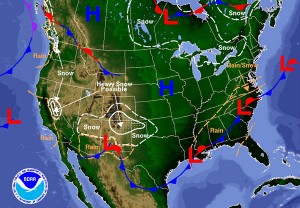Evaluate the weather forecast … can you go safely?
Spend some time, an hour or two, or more as needed, reviewing weather basics with John, using your iPad or Android. How are you with the flight planning apps, ForeFlight, WingX and others?
Regarding the situation with the COVID-19 Virus, we can meet in person, unless you’d prefer to meet remotely using available technology; Skype or FaceTime, or Zoom or GoToMeeting, or similar.
Evaluate the weather. Questions to ask; Can you go safely? How is your airplane equipped? How well do you understand the avionics in your airplane? Are you current and proficient? What are your personal minimums?
KICT 170253Z 35024G33KT 6SM BR OVC006 07/05 A2996 RMK A02 PK WND 35035/0239 PRESRR SLP146 60014 T0072050 53057
Look at the TAF below – are you able to interpret what it says?
KICT 170225Z 1702/1724 36017G25KT P6SM VCSH OVC007 FM 170600 36016G24KT 6SM -RA OVC007 FM 171100 36017G25KT P6SM OVC015 FM 171900 36012KT P6SM BKN050
IF you need help with this, I can help you! I spent four years working as an aircraft dispatcher for two FAR 121 airlines, and I spent my days reading and interpreting current and forecast weather, the prog charts, analyzing the weather, and flight planning. I dealt with this every day; do we need an alternate, and the go/no-go decision.
How many pilots need help with this? Many! Weather related accidents continue to occur with alarming regularity. Even if you can interpret, do you understand the importance of weather trends, and which trends are important to check? I can help you with that, as well. This is important stuff that you NEED to know!
IF you know this, then you know more than most. IF you’d like to learn more, I am working on a series of short courses reviewing weather basics. We’ve all forgotten something. Click here to go to my ‘weather basics’ mind map and short course. Thank you.
 We will also look at the following –
We will also look at the following –
- Surface Analysis Charts (SA)
- Low/Hi Altitude Prog Charts
- 850mb, 750mb, and 500mb constant pressure chars.
- High- and low-pressure systems, ridges, and troughs
- Frontal systems, cold, warm occluded, stationary, and secondary fronts.
- PIREPS
John Mahany has been a student of aviation weather, for four decades. He has extensive experience with all of this, and more. Spend some time reviewing the basics, and come away more confident, while becoming a better, more weather savvy pilot in the process. Your passengers will thank you!
